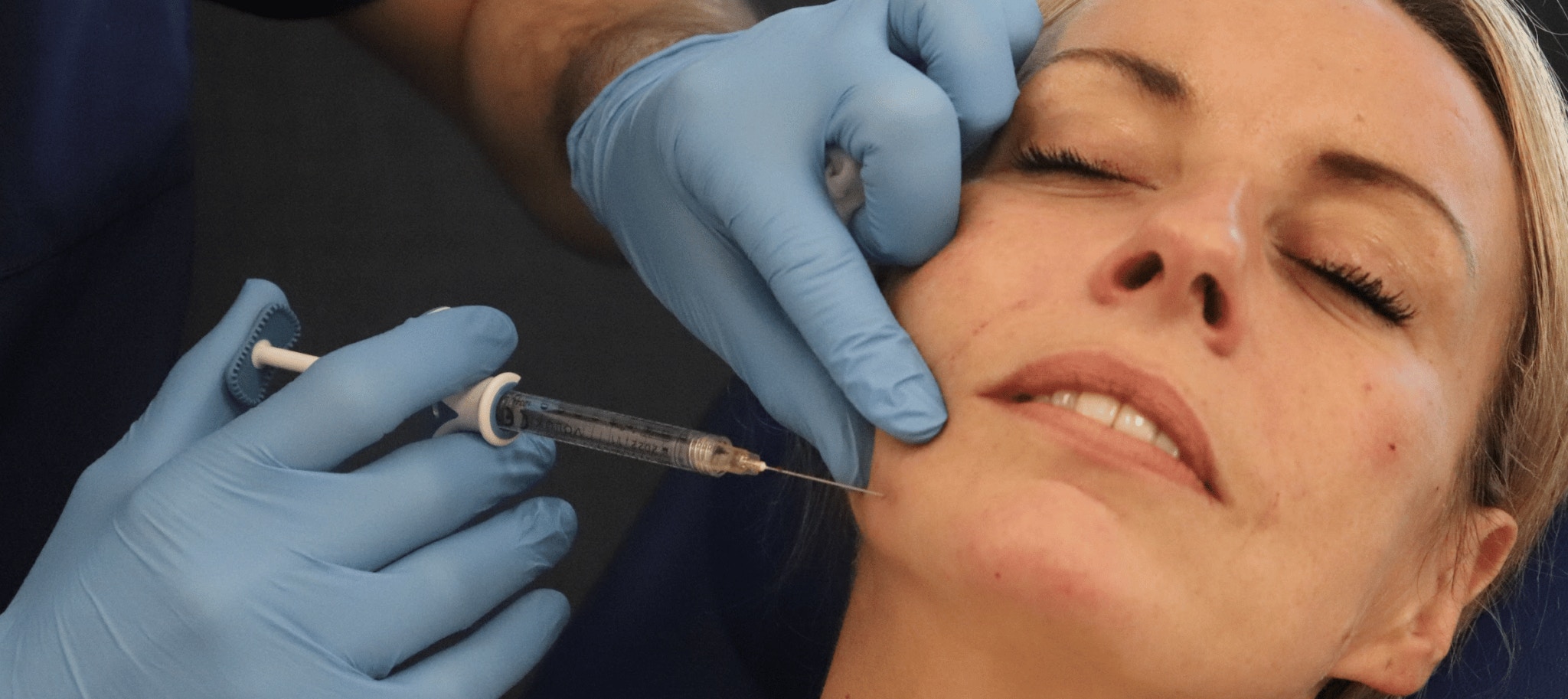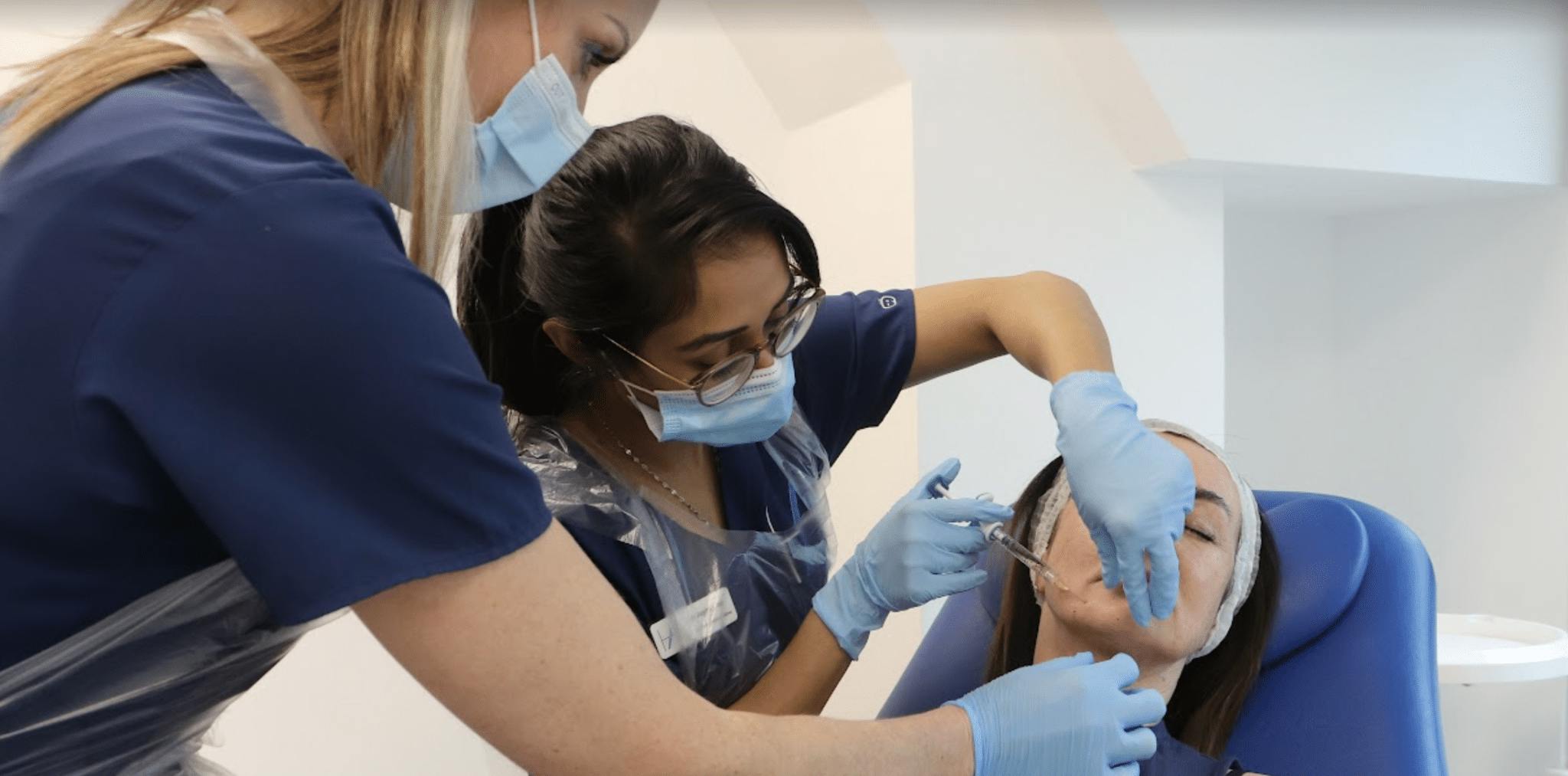Jawline Contouring advice for New Injectors

Jawline contouring treatments are becoming increasingly well-known, largely thanks to social media.
There has been a trend across image-sharing platforms such as Instagram and TikTok for sharing Before and After photos showing significant, silhouette-altering results.
A social media spat also drew attention to jawline filler when a cosmetic nurse practitioner on TikTok suggested the treatment for Stranger Things actor, Natalia Dyer.
As a result of this increased interest, we’re receiving more queries about how to perfect your jawline contouring skills in order to meet patient demand.

JAWLINE CONTOURING ADVICE FOR NEW INJECTORS
We interviewed cosmetic doctor, Level 7 Diploma graduate and clinical trainer, Dr Lindsay Jones to find out everything you need to know about jawline contouring.
Read on for her expert advice, specially geared towards new aesthetics practitioners...
What concerns do patients typically present with when jawline contouring should be considered?
“Patients who present asking for jawline treatments usually mention concerns about sagging, lack of definition and the area not looking as tight as it once used to,” advises Dr Lindsay.
“Generally our more mature patients are referring to changes to the jawline that have resulted from the natural ageing process. However, there will be younger patients who have not developed age-related changes, too. These are instead looking for ‘improvements’ based upon their beauty ideals.”
In which circumstances do jawline fillers work best?
“Jawline fillers tend to work best in combination with treatments in the mid-face,” states Dr Lindsay. “This is because the jawline is an integral part of the overall face shape when looking from the front and also the side profile. It should always be in balance with the cheeks, upper third/forehead, and the chin.”
When is masseter botox most appropriate?
“Masseter botox is often referred to as a ‘jawline slimming’ treatment. It’s a fantastic option for any patient who has enlarged masseter muscles that sit over the angle of the jaw. This is particularly true for our female patients as a wide jaw angle can create a square, more masculine appearance,” clarifies Dr Lindsay.
“However, if the angle of the jaw is wide due to the underlying bone structure or overlying fatty tissue then treating the masseter muscle with botulinum toxin will not help. This is why a thorough examination is so important in determining the cause.”

What is the difference in approach to jawline contouring for male, female and gender neutral patients?
“It’s so important to understand the differences between beauty ideals for different genders,” stresses Dr Lindsay.
“The traditional male ideal is for the jaw angle to be almost square and the width of the jaw in front profile to be as wide as the cheeks,” she notes. Adding, “Historically the female ideal is for the jaw angle to be wider and for the width of the jaw in front profile to be narrower than the cheeks.”
“When treating gender-neutral patients it’s important to have an open and non-judgemental conversation about the appearance they are hoping to achieve,” she recommends. “The ideal treatment for all patients involves working with their underlying anatomy. However, we can make adjustments to feminise or masculinise features in line with a patient’s gender identity.”
Aesthetics practitioners struggling to get to grips with injecting the jawline, or wanting to really hone their technique, can book our Facial Contouring Masterclass. This focussed training targets the mid-face and lower face, including how to combine treatments to best effect. Our small group setting creates an intimate educational experience for expedited learning.
Are there any racial differences that injectors should consider when assessing proportions and deciding on treatments?
Dr Lindsay makes a very important point here: “There is much literature dedicated to the inter-ethnic variability in face shapes and proportions. It’s important that we’re aware of these differences and don’t impose Western beauty standards on our patients for any of our treatments.”
What tools and injecting techniques would you use for jawline fillers for men and for women?
“The techniques for injecting patients of different genders or races are exactly the same,” she notes. “However, the product volumes will vary depending on the desired end result.”
“A multi-layer technique is the best approach, paying attention to anatomy and the selection of appropriate product” she advises. “This uses deep injections in combination with superficial layers of filler. The deep injections onto the bone using a needle provide foundational structure. Meanwhile the superficial treatment under the skin using a cannula provides added definition.”
THE IMPORTANCE OF ANATOMICAL KNOWLEDGE FOR INJECTORS
As you can see from Dr Lindsay’s advice, one of the key requirements for performing safe, effective jawline contouring is a sound knowledge of facial anatomy.
This is a key tenet of our teachings here at Harley Academy. In order to pursue a career as an aesthetics specialist, you must have a thorough understanding of relevant anatomy.
Anatomical instruction is provided to a foundational level in our beginners filler training courses. We then cover this in-depth in our eLearning for the Level 7 Diploma in Botox & Dermal Filler courses, including our Fast Track option.
Knowing your anatomy provides a wealth of benefits that will stand you in good stead throughout your aesthetics career. These include…
- Understanding the underlying facial structure
- Knowing the relationship between zones
- Helping to prevent complications
- Providing informed assessments and personalised treatment plans based on your patients’ unique anatomy
- Understanding how combination treatments work and the order in which these should be performed
- Determining when patients are not suitable for particular treatments
- Making you a more knowledgeable and confident injector
- Being able to share this information with your patients to demonstrate they are in capable hands.
If you’re a doctor, dentist, nurse or midwife looking to make a move into aesthetic medicine, we cannot stress the importance of choosing a solid aesthetics training course that covers anatomy, highly enough.
For more information on the dermal filler courses we offer doctors, dentists, nurses and clinical pharmacists here at Harley Academy, from our Ofqual-regulated Level 7 Diploma courses to our Masterclass options, just get in touch.
Book a call with our Course Advisors for personalised recommendations. Not only can they answer all your questions, but they'll happily talk you through our course components and payment options, too.
Still have questions about jawline contouring? Let us know by leaving a comment on the Harley Academy Instagram account!
All information correct at the time of publication
Download our full prospectus
Browse all our injectables, dermal fillers and cosmetic dermatology courses in one document
By submitting this form, you agree to receive marketing about our products, events, promotions and exclusive content. Consent is not a condition of purchase, and no purchase is necessary. Message frequency varies. View our Privacy Policy and Terms & Conditions
Attend our FREE open evening
If you're not sure which course is right for you, let us help
Join us online or in-person at our free open evening to learn more
Our Partners














STAY INFORMED
Sign up to receive industry news, careers advice, special offers and information on Harley Academy courses and services


